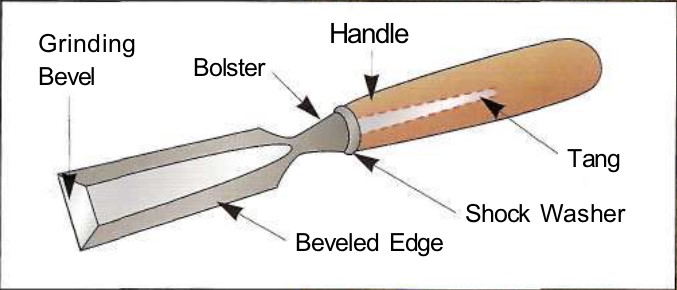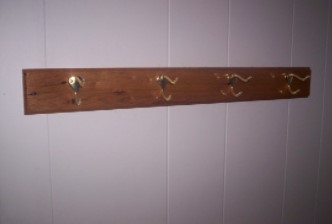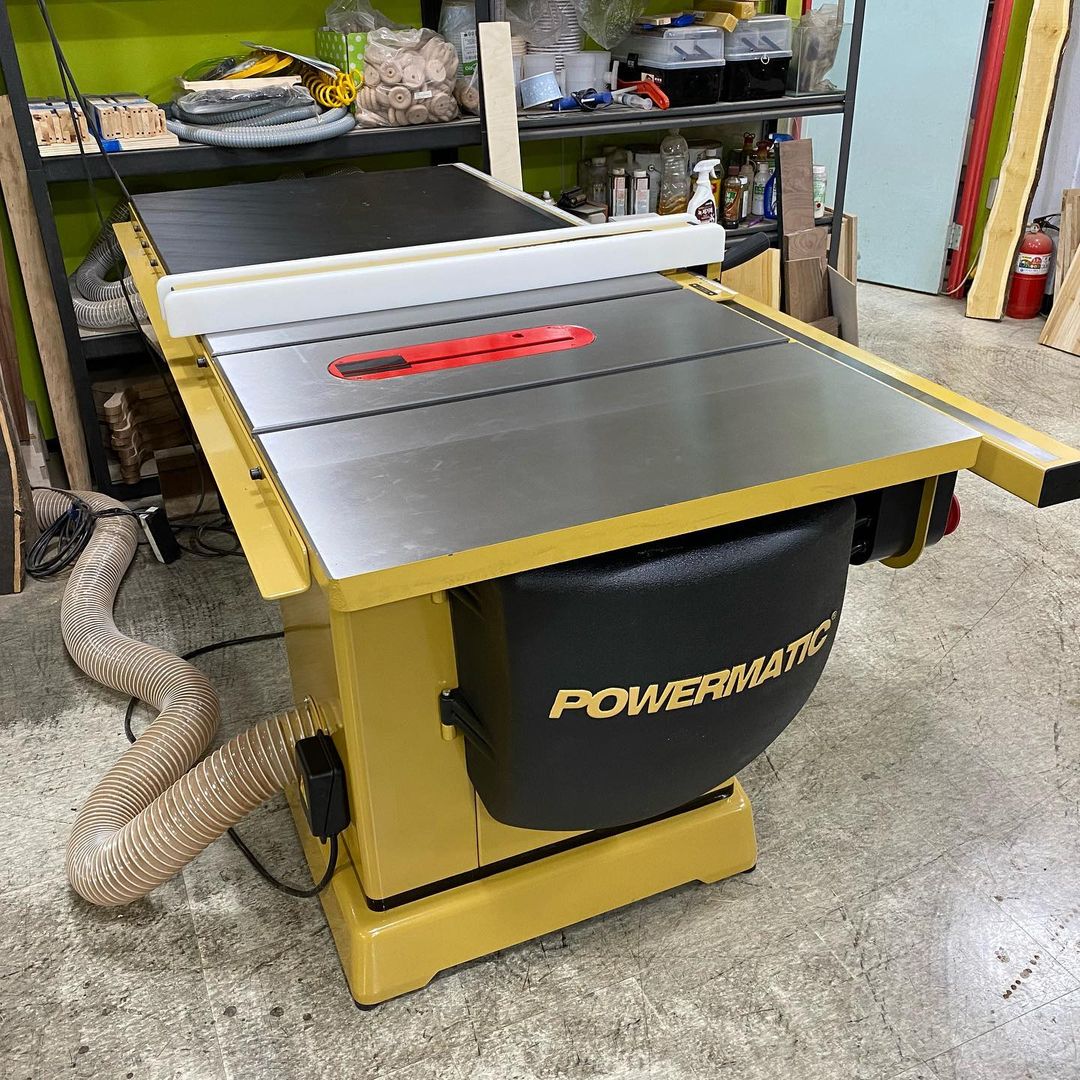Chisels can be broadly classified into two groups: those designed for use with hand pressure only, and those intended to be driven by a mallet. Chisels made for hand use only may be either firmer chisels (originally called “former” chisels because they were used to form rough shapes) or paring chisels. Mallet-driven chisels are mostly thick, stout chisels used to chop mortises. Over time, any heavy-duty chisel became known as a mortise chisel, even though they could be used for carving or other shaping work. Most chisels are similar in appearance. They each have a wood or plastic handle and a blade with a tang or socket (bottom drawing). What sets them apart primarily is the profile of the blade (top drawing) and their respective grinds or cutting angles (middle drawing). Mortise chisels are easily identified by their thick, almost square blades. The bevel is ground to a steep angle to hold up under the constant blows of a mallet. Firmer chisels can have either square or beveled edges. The bevel for squareedged firmer chisels is usually a bit steeper than for bevel-edged chisels, which are most often used for paring. Note that in the middle drawing two sets of angles are given. As a general rule of thumb, chisels used on hardwoods require a steeper bevel to cut effectively than those used on softwoods.




